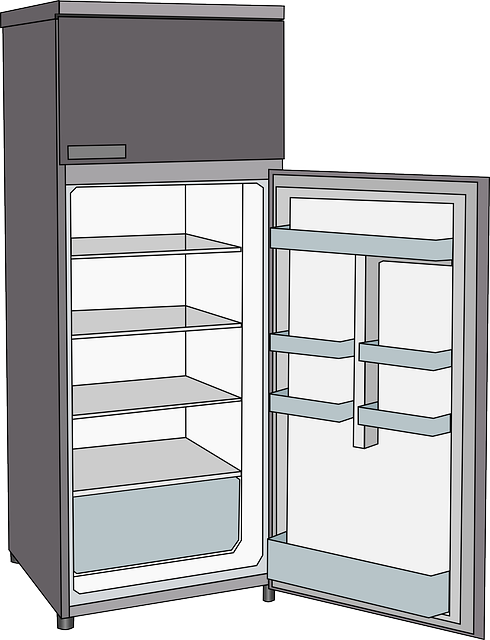Introduction
A refrigerator door seal is vital for appliance efficiency and temperature control. Over time, worn or damaged seals can increase energy consumption and risk food spoilage. This blog will help you identify and fix door seal issues, save money on energy bills, and maintain fridge performance.

Reasons why the door seals or gaskets broke down
The Designs of refrigerator doors can survive for many years, but they can break down over time. There are a number of reasons why a refrigerator door seal or gasket may break, including:
- Age – As the refrigerator gets older, the rubber in the seal can start to dry out and become brittle, which can cause it to crack or tear.
- Wear and tear – The door seal is subjected to a lot of wear and tear over time, especially if the door is opened and closed frequently. This can cause the seal to become loose or misaligned, which can affect its ability to create an airtight seal.
- Damage – The seal can be damaged by a variety of factors, such as accidentally slamming the door or pulling on it too hard. This can cause the seal to tear or become misaligned.
- Dirt and grime – If the seal is not cleaned regularly, dirt and grime can build up on it, which can cause it to become stiff and less flexible over time.
- Moisture – If moisture gets into the seal, it can cause it to warp or become moldy, which can affect its ability to create an airtight seal.
Experience the ultimate convenience and efficiency with the TCL P605TM Top Mount Freezer Refrigerator, featuring flexible space, adjustable tempered shelves, and Twin Eco Inverter technology for a powerful, no-frost cooling solution.
Possible solution to this problem
Wash the Refrigerator Door Gasket and Door Pocket
Your next trick is to make sure the refrigerator gasket-pocket meeting is totally clean. Spills and built-up grime can get in the way of a firm seal where the rubber gasket suctions to the fridge door pocket. Take a wet sponge and surface cleaner and thoroughly wash both the fridge door gasket Pay attention to the inner folds of the rubber seal, as well, because they can hide grime that will creep back out to cause further problems.
Then identify the door pocket, the specific surface that the rubber gasket seals onto. Scrub this as well, and any sticky, crusty, or grimy surfaces nearby. Dry both the gasket and the door pocket to make sure that your test results are not based on water suction. Then see if a clean pair of surfaces will now form the seal you need to maintain a cold refrigerator.
Oil the Door Gasket
Your next step is an old home repair trick that has been bouncing around the internet and through word-of-mouth for decades: Vaseline. Once the door gasket and pocket are clean, get yourself a little tub of vaseline or non-brand-name petroleum jelly. Dip your finger in the vaseline and then lightly rub a layer of vaseline over your refrigerator door gasket. Rubber gets hard and less flexible as it gets older and vaseline will help it spring back up and become ‘stickier’ to form that suction seal.
Be careful not to gob it on, just apply the vaseline in a thin layer like you would rub it on your skin. Then try closing the door to see if you have restored its ability to seal.
Adjust the Refrigerator Door Hinges
Next, check the door hinges. Take everything out of the refrigerator door and let it fall open. If it hangs mostly in place, your door hinges are balanced and likely not the problem. If it swings wide then your fridge door hinges are no longer balanced and the top hinge is likely loose. This will cause the door to ‘slouch’ forward which can result both in the swinging action you’re seeing now and an incomplete seal with the door pocket.
Grab your screwdriver and tighten the upper hinges of your fridge door. If you have one, place a bubble level first on top of the fridge to make sure it is level (if not, adjust the feet). Then place the bubble level on top of the door and tighten the top hinge until it is level and no longer swinging. Now push the door closed. If it seals, congratulate yourself and restock your fridge.
Replace the Refrigerator Door Gasket
Finally, you may need to replace your refrigerator door gasket. This is most likely if the gasket clearly appears to be shrunken and hard (old door gaskets do this) or twisted, torn, or broken in some way. Replacing the door gasket is actually surprisingly easy if you have a replacement with the correct part number for your fridge’s make and model. Lift the gasket fold on the inside of the door to reveal a set of securing screws. Loosen the screws but do not remove them all the way. Pull the old door gasket out and fit the new one into its place, slotting the long flap of the gasket into the slip in the door that was loosened by the screws.
Tighten the screws again by lifting the fold of the new gasket until it is in place. Then try closing your door.
Hopefully, one or all of these repair fixes has left you with a refrigerator that seals once again, If you are still having problems, it’s time to call a professional to figure out what went wrong. For more home how-to guides on appliance repair and maintenance, check out the blog! For home appliance repairs beyond your DIY capabilities, contact us today!
Purchase a replacement fridge door seal
Look for the fridge model number and find the appropriate replacement door seal with a quick online search. The fridge model number can usually be found on a sticker inside the fridge.
https://www.checkatrade.com/blog/how-to/repair-fridge-door-seal/
Tape the gasket down for 1–2 days if it has twists.
Lay the gasket flat on the floor or a table. If any areas look twisted or raised, tape them down so they lie flat. Leave the gasket in place for at least 1 day so it has time to flatten out into the proper shape.[5]
Alternatively, set lightweight objects on the gasket to hold it in place. Just make sure the objects aren’t so heavy that they squish the gasket down.
Apply baby or talcum powder around the door seal
Shake a little bit of the powder into your hand and rub it around the sides and corners of the new gasket. The powder helps reduce friction and prevents the door seal from twisting when you open and close the door.
Rub petroleum jelly on the seal along the hinged side of the door
Take a fingertip-sized amount and spread it over the gasket’s surface on the side with the hinges. Spread the petroleum jelly in a thin, even layer.[13]
Petroleum jelly helps the door seal slide against your fridge when you open and close the door so it doesn’t twist or warp.
Open and close your fridge door to check for gaps in the seal
Slowly close your fridge and inspect the gasket for any warped areas. Run your finger around the edge of your fridge door to make sure the seal sits flush against your fridge. Then, open the door to ensure the seal doesn’t drag or twist against the fridge.[14]
If you notice warps in the gasket, try heating the rubber with a hair dryer on low heat to make it fit against your fridge better.
also read here Vacuum Cleaner Smells Like Burning:Here’s How to Fix It

